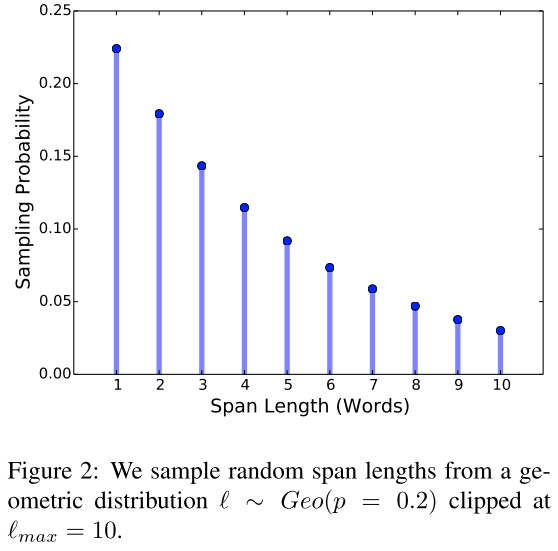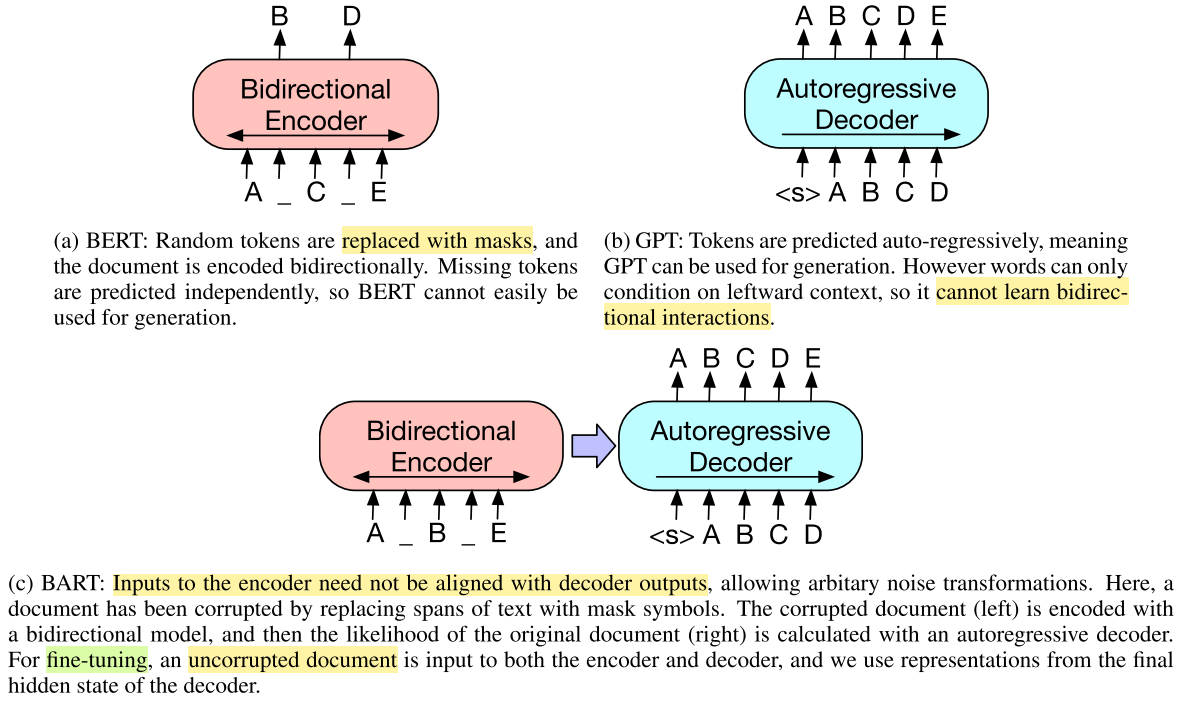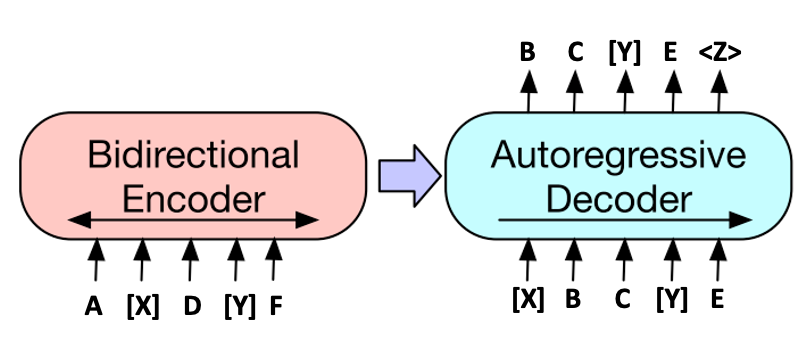1
2
3
4
5
6
7
8
9
10
11
12
13
14
15
16
17
18
19
20
21
22
23
24
25
26
27
28
29
30
31
32
33
34
35
36
37
38
39
40
41
42
43
44
45
46
47
48
49
50
51
52
53
54
55
56
57
58
59
60
61
62
63
64
65
66
67
68
69
70
71
72
73
74
75
76
77
78
79
80
81
82
83
84
85
86
87
88
89
90
91
92
93
94
95
96
97
98
99
100
101
102
103
104
105
106
107
108
109
110
111
112
113
114
115
116
117
118
119
120
121
122
123
124
125
126
127
128
129
130
131
132
133
134
135
136
137
138
139
140
141
142
143
144
145
146
147
148
149
150
151
152
153
154
155
156
157
158
159
160
161
162
163
164
165
166
167
168
169
170
171
172
173
174
175
176
177
178
179
180
181
182
183
184
185
186
187
188
189
190
191
192
193
194
195
196
197
198
199
200
201
202
203
204
205
206
207
208
209
210
211
212
213
214
215
216
217
218
219
220
221
222
223
224
225
226
227
228
229
230
231
232
233
234
235
236
237
238
239
240
241
242
243
244
245
246
247
248
249
250
251
252
253
254
255
256
257
258
259
260
261
262
263
264
265
266
267
268
269
270
271
272
273
274
275
276
277
278
279
280
281
282
283
284
285
286
287
288
289
290
291
292
293
294
295
296
297
298
299
300
301
302
303
304
305
306
307
308
309
310
311
312
313
314
315
316
317
318
319
320
321
322
323
324
325
326
327
328
329
330
331
332
333
334
335
336
337
338
339
340
341
342
343
344
345
346
347
348
349
350
351
352
353
354
355
356
357
358
359
360
361
362
363
364
365
366
367
368
369
370
371
372
373
374
375
376
377
378
379
380
381
382
383
384
385
386
387
388
389
390
391
392
393
394
395
396
397
398
399
400
401
402
403
404
405
406
407
408
409
410
411
412
413
414
415
416
417
418
419
420
421
422
423
424
425
426
427
428
429
430
431
432
433
434
435
436
437
438
439
440
441
442
443
444
445
446
447
448
449
450
451
452
453
454
455
456
457
458
459
460
461
462
463
464
465
466
467
468
469
470
471
472
473
474
475
476
477
478
479
480
481
482
483
484
485
486
487
488
489
490
491
492
493
494
495
496
497
498
499
500
501
|
@dataclass
class DataCollatorForLanguageModeling(DataCollatorMixin):
"""
Data collator used for language modeling. Inputs are dynamically padded to the maximum length of a batch if they
are not all of the same length.
Args:
tokenizer ([`PreTrainedTokenizer`] or [`PreTrainedTokenizerFast`]):
The tokenizer used for encoding the data.
mlm (`bool`, *optional*, defaults to `True`):
Whether or not to use masked language modeling. If set to `False`, the labels are the same as the inputs
with the padding tokens ignored (by setting them to -100). Otherwise, the labels are -100 for non-masked
tokens and the value to predict for the masked token.
mlm_probability (`float`, *optional*, defaults to 0.15):
The probability with which to (randomly) mask tokens in the input, when `mlm` is set to `True`.
pad_to_multiple_of (`int`, *optional*):
If set will pad the sequence to a multiple of the provided value.
return_tensors (`str`):
The type of Tensor to return. Allowable values are "np", "pt" and "tf".
<Tip>
For best performance, this data collator should be used with a dataset having items that are dictionaries or
BatchEncoding, with the `"special_tokens_mask"` key, as returned by a [`PreTrainedTokenizer`] or a
[`PreTrainedTokenizerFast`] with the argument `return_special_tokens_mask=True`.
</Tip>"""
tokenizer: PreTrainedTokenizerBase
mlm: bool = True
mlm_probability: float = 0.15
pad_to_multiple_of: Optional[int] = None
tf_experimental_compile: bool = False
return_tensors: str = "pt"
def __post_init__(self):
if self.mlm and self.tokenizer.mask_token is None:
raise ValueError(
"This tokenizer does not have a mask token which is necessary for masked language modeling. "
"You should pass `mlm=False` to train on causal language modeling instead."
)
if self.tf_experimental_compile:
import tensorflow as tf
self.tf_mask_tokens = tf.function(self.tf_mask_tokens, jit_compile=True)
@staticmethod
def tf_bernoulli(shape, probability):
import tensorflow as tf
prob_matrix = tf.fill(shape, probability)
return tf.cast(prob_matrix - tf.random.uniform(shape, 0, 1) >= 0, tf.bool)
def tf_mask_tokens(
self, inputs: Any, vocab_size, mask_token_id, special_tokens_mask: Optional[Any] = None
) -> Tuple[Any, Any]:
"""
Prepare masked tokens inputs/labels for masked language modeling: 80% MASK, 10% random, 10% original.
"""
import tensorflow as tf
input_shape = tf.shape(inputs)
masked_indices = self.tf_bernoulli(input_shape, self.mlm_probability) & ~special_tokens_mask
labels = tf.where(masked_indices, inputs, -100)
indices_replaced = self.tf_bernoulli(input_shape, 0.8) & masked_indices
inputs = tf.where(indices_replaced, mask_token_id, inputs)
indices_random = self.tf_bernoulli(input_shape, 0.1) & masked_indices & ~indices_replaced
random_words = tf.random.uniform(input_shape, maxval=vocab_size, dtype=tf.int64)
inputs = tf.where(indices_random, random_words, inputs)
return inputs, labels
def tf_call(self, examples: List[Union[List[int], Any, Dict[str, Any]]]) -> Dict[str, Any]:
import tensorflow as tf
if isinstance(examples[0], (dict, BatchEncoding)):
batch = self.tokenizer.pad(examples, return_tensors="tf", pad_to_multiple_of=self.pad_to_multiple_of)
else:
batch = {
"input_ids": _tf_collate_batch(examples, self.tokenizer, pad_to_multiple_of=self.pad_to_multiple_of)
}
special_tokens_mask = batch.pop("special_tokens_mask", None)
if self.mlm:
if special_tokens_mask is None:
special_tokens_mask = [
self.tokenizer.get_special_tokens_mask(val, already_has_special_tokens=True)
for val in batch["input_ids"].numpy().tolist()
]
special_tokens_mask = tf.cast(tf.convert_to_tensor(special_tokens_mask, dtype=tf.int64), tf.bool)
else:
special_tokens_mask = tf.cast(special_tokens_mask, tf.bool)
batch["input_ids"], batch["labels"] = self.tf_mask_tokens(
tf.cast(batch["input_ids"], tf.int64),
special_tokens_mask=special_tokens_mask,
mask_token_id=self.tokenizer.mask_token_id,
vocab_size=len(self.tokenizer),
)
else:
labels = batch["input_ids"]
if self.tokenizer.pad_token_id is not None:
labels = tf.where(labels == self.tokenizer.pad_token_id, -100, labels)
else:
labels = tf.identity(labels)
batch["labels"] = labels
return batch
def torch_call(self, examples: List[Union[List[int], Any, Dict[str, Any]]]) -> Dict[str, Any]:
if isinstance(examples[0], (dict, BatchEncoding)):
batch = self.tokenizer.pad(examples, return_tensors="pt", pad_to_multiple_of=self.pad_to_multiple_of)
else:
batch = {
"input_ids": _torch_collate_batch(examples, self.tokenizer, pad_to_multiple_of=self.pad_to_multiple_of)
}
special_tokens_mask = batch.pop("special_tokens_mask", None)
if self.mlm:
batch["input_ids"], batch["labels"] = self.torch_mask_tokens(
batch["input_ids"], special_tokens_mask=special_tokens_mask
)
else:
labels = batch["input_ids"].clone()
if self.tokenizer.pad_token_id is not None:
labels[labels == self.tokenizer.pad_token_id] = -100
batch["labels"] = labels
return batch
def torch_mask_tokens(self, inputs: Any, special_tokens_mask: Optional[Any] = None) -> Tuple[Any, Any]:
"""
Prepare masked tokens inputs/labels for masked language modeling: 80% MASK, 10% random, 10% original.
"""
import torch
labels = inputs.clone()
probability_matrix = torch.full(labels.shape, self.mlm_probability)
if special_tokens_mask is None:
special_tokens_mask = [
self.tokenizer.get_special_tokens_mask(val, already_has_special_tokens=True) for val in labels.tolist()
]
special_tokens_mask = torch.tensor(special_tokens_mask, dtype=torch.bool)
else:
special_tokens_mask = special_tokens_mask.bool()
probability_matrix.masked_fill_(special_tokens_mask, value=0.0)
masked_indices = torch.bernoulli(probability_matrix).bool()
labels[~masked_indices] = -100
indices_replaced = torch.bernoulli(torch.full(labels.shape, 0.8)).bool() & masked_indices
inputs[indices_replaced] = self.tokenizer.convert_tokens_to_ids(self.tokenizer.mask_token)
indices_random = torch.bernoulli(torch.full(labels.shape, 0.5)).bool() & masked_indices & ~indices_replaced
random_words = torch.randint(len(self.tokenizer), labels.shape, dtype=torch.long)
inputs[indices_random] = random_words[indices_random]
return inputs, labels
def numpy_call(self, examples: List[Union[List[int], Any, Dict[str, Any]]]) -> Dict[str, Any]:
import numpy as np
if isinstance(examples[0], (dict, BatchEncoding)):
batch = self.tokenizer.pad(examples, return_tensors="np", pad_to_multiple_of=self.pad_to_multiple_of)
else:
batch = {
"input_ids": _numpy_collate_batch(examples, self.tokenizer, pad_to_multiple_of=self.pad_to_multiple_of)
}
special_tokens_mask = batch.pop("special_tokens_mask", None)
if self.mlm:
batch["input_ids"], batch["labels"] = self.numpy_mask_tokens(
batch["input_ids"], special_tokens_mask=special_tokens_mask
)
else:
labels = np.copy(batch["input_ids"])
if self.tokenizer.pad_token_id is not None:
labels[labels == self.tokenizer.pad_token_id] = -100
batch["labels"] = labels
return batch
def numpy_mask_tokens(self, inputs: Any, special_tokens_mask: Optional[Any] = None) -> Tuple[Any, Any]:
"""
Prepare masked tokens inputs/labels for masked language modeling: 80% MASK, 10% random, 10% original.
"""
import numpy as np
labels = np.copy(inputs)
probability_matrix = np.full(labels.shape, self.mlm_probability)
if special_tokens_mask is None:
special_tokens_mask = [
self.tokenizer.get_special_tokens_mask(val, already_has_special_tokens=True) for val in labels.tolist()
]
special_tokens_mask = np.array(special_tokens_mask, dtype=np.bool)
else:
special_tokens_mask = special_tokens_mask.astype(np.bool)
probability_matrix[special_tokens_mask] = 0
masked_indices = np.random.binomial(1, probability_matrix, size=probability_matrix.shape).astype(np.bool)
labels[~masked_indices] = -100
indices_replaced = np.random.binomial(1, 0.8, size=labels.shape).astype(np.bool) & masked_indices
inputs[indices_replaced] = self.tokenizer.mask_token_id
indices_random = (
np.random.binomial(1, 0.5, size=labels.shape).astype(np.bool) & masked_indices & ~indices_replaced
)
random_words = np.random.randint(
low=0, high=len(self.tokenizer), size=np.count_nonzero(indices_random), dtype=np.int64
)
inputs[indices_random] = random_words
return inputs, labels
@dataclass
class DataCollatorForWholeWordMask(DataCollatorForLanguageModeling):
"""
Data collator used for language modeling that masks entire words.
- collates batches of tensors, honoring their tokenizer's pad_token
- preprocesses batches for masked language modeling
<Tip>
This collator relies on details of the implementation of subword tokenization by [`BertTokenizer`], specifically
that subword tokens are prefixed with *##*. For tokenizers that do not adhere to this scheme, this collator will
produce an output that is roughly equivalent to [`.DataCollatorForLanguageModeling`].
</Tip>"""
def torch_call(self, examples: List[Union[List[int], Any, Dict[str, Any]]]) -> Dict[str, Any]:
if isinstance(examples[0], (dict, BatchEncoding)):
input_ids = [e["input_ids"] for e in examples]
else:
input_ids = examples
examples = [{"input_ids": e} for e in examples]
batch_input = _torch_collate_batch(input_ids, self.tokenizer, pad_to_multiple_of=self.pad_to_multiple_of)
mask_labels = []
for e in examples:
ref_tokens = []
for id in tolist(e["input_ids"]):
token = self.tokenizer._convert_id_to_token(id)
ref_tokens.append(token)
if "chinese_ref" in e:
ref_pos = tolist(e["chinese_ref"])
len_seq = len(e["input_ids"])
for i in range(len_seq):
if i in ref_pos:
ref_tokens[i] = "##" + ref_tokens[i]
mask_labels.append(self._whole_word_mask(ref_tokens))
batch_mask = _torch_collate_batch(mask_labels, self.tokenizer, pad_to_multiple_of=self.pad_to_multiple_of)
inputs, labels = self.torch_mask_tokens(batch_input, batch_mask)
return {"input_ids": inputs, "labels": labels}
def tf_call(self, examples: List[Union[List[int], Any, Dict[str, Any]]]) -> Dict[str, Any]:
if isinstance(examples[0], (dict, BatchEncoding)):
input_ids = [e["input_ids"] for e in examples]
else:
input_ids = examples
examples = [{"input_ids": e} for e in examples]
batch_input = _tf_collate_batch(input_ids, self.tokenizer, pad_to_multiple_of=self.pad_to_multiple_of)
mask_labels = []
for e in examples:
ref_tokens = []
for id in tolist(e["input_ids"]):
token = self.tokenizer._convert_id_to_token(id)
ref_tokens.append(token)
if "chinese_ref" in e:
ref_pos = tolist(e["chinese_ref"])
len_seq = len(e["input_ids"])
for i in range(len_seq):
if i in ref_pos:
ref_tokens[i] = "##" + ref_tokens[i]
mask_labels.append(self._whole_word_mask(ref_tokens))
batch_mask = _tf_collate_batch(mask_labels, self.tokenizer, pad_to_multiple_of=self.pad_to_multiple_of)
inputs, labels = self.tf_mask_tokens(batch_input, batch_mask)
return {"input_ids": inputs, "labels": labels}
def numpy_call(self, examples: List[Union[List[int], Any, Dict[str, Any]]]) -> Dict[str, Any]:
if isinstance(examples[0], (dict, BatchEncoding)):
input_ids = [e["input_ids"] for e in examples]
else:
input_ids = examples
examples = [{"input_ids": e} for e in examples]
batch_input = _numpy_collate_batch(input_ids, self.tokenizer, pad_to_multiple_of=self.pad_to_multiple_of)
mask_labels = []
for e in examples:
ref_tokens = []
for id in tolist(e["input_ids"]):
token = self.tokenizer._convert_id_to_token(id)
ref_tokens.append(token)
if "chinese_ref" in e:
ref_pos = tolist(e["chinese_ref"])
len_seq = len(e["input_ids"])
for i in range(len_seq):
if i in ref_pos:
ref_tokens[i] = "##" + ref_tokens[i]
mask_labels.append(self._whole_word_mask(ref_tokens))
batch_mask = _numpy_collate_batch(mask_labels, self.tokenizer, pad_to_multiple_of=self.pad_to_multiple_of)
inputs, labels = self.numpy_mask_tokens(batch_input, batch_mask)
return {"input_ids": inputs, "labels": labels}
def _whole_word_mask(self, input_tokens: List[str], max_predictions=512):
"""
Get 0/1 labels for masked tokens with whole word mask proxy
"""
if not isinstance(self.tokenizer, (BertTokenizer, BertTokenizerFast)):
warnings.warn(
"DataCollatorForWholeWordMask is only suitable for BertTokenizer-like tokenizers. "
"Please refer to the documentation for more information."
)
cand_indexes = []
for (i, token) in enumerate(input_tokens):
if token == "[CLS]" or token == "[SEP]":
continue
if len(cand_indexes) >= 1 and token.startswith("##"):
cand_indexes[-1].append(i)
else:
cand_indexes.append([i])
random.shuffle(cand_indexes)
num_to_predict = min(max_predictions, max(1, int(round(len(input_tokens) * self.mlm_probability))))
masked_lms = []
covered_indexes = set()
for index_set in cand_indexes:
if len(masked_lms) >= num_to_predict:
break
if len(masked_lms) + len(index_set) > num_to_predict:
continue
is_any_index_covered = False
for index in index_set:
if index in covered_indexes:
is_any_index_covered = True
break
if is_any_index_covered:
continue
for index in index_set:
covered_indexes.add(index)
masked_lms.append(index)
if len(covered_indexes) != len(masked_lms):
raise ValueError("Length of covered_indexes is not equal to length of masked_lms.")
mask_labels = [1 if i in covered_indexes else 0 for i in range(len(input_tokens))]
return mask_labels
def torch_mask_tokens(self, inputs: Any, mask_labels: Any) -> Tuple[Any, Any]:
"""
Prepare masked tokens inputs/labels for masked language modeling: 80% MASK, 10% random, 10% original. Set
'mask_labels' means we use whole word mask (wwm), we directly mask idxs according to it's ref.
"""
import torch
if self.tokenizer.mask_token is None:
raise ValueError(
"This tokenizer does not have a mask token which is necessary for masked language modeling. Remove the --mlm flag if you want to use this tokenizer."
)
labels = inputs.clone()
probability_matrix = mask_labels
special_tokens_mask = [
self.tokenizer.get_special_tokens_mask(val, already_has_special_tokens=True) for val in labels.tolist()
]
probability_matrix.masked_fill_(torch.tensor(special_tokens_mask, dtype=torch.bool), value=0.0)
if self.tokenizer._pad_token is not None:
padding_mask = labels.eq(self.tokenizer.pad_token_id)
probability_matrix.masked_fill_(padding_mask, value=0.0)
masked_indices = probability_matrix.bool()
labels[~masked_indices] = -100
indices_replaced = torch.bernoulli(torch.full(labels.shape, 0.8)).bool() & masked_indices
inputs[indices_replaced] = self.tokenizer.convert_tokens_to_ids(self.tokenizer.mask_token)
indices_random = torch.bernoulli(torch.full(labels.shape, 0.5)).bool() & masked_indices & ~indices_replaced
random_words = torch.randint(len(self.tokenizer), labels.shape, dtype=torch.long)
inputs[indices_random] = random_words[indices_random]
return inputs, labels
def tf_mask_tokens(self, inputs: Any, mask_labels: Any) -> Tuple[Any, Any]:
"""
Prepare masked tokens inputs/labels for masked language modeling: 80% MASK, 10% random, 10% original. Set
'mask_labels' means we use whole word mask (wwm), we directly mask idxs according to it's ref.
"""
import tensorflow as tf
input_shape = tf.shape(inputs)
if self.tokenizer.mask_token is None:
raise ValueError(
"This tokenizer does not have a mask token which is necessary for masked language modeling. Remove the --mlm flag if you want to use this tokenizer."
)
labels = tf.identity(inputs)
masked_indices = tf.cast(mask_labels, tf.bool)
special_tokens_mask = [
self.tokenizer.get_special_tokens_mask(val, already_has_special_tokens=True) for val in labels
]
masked_indices = masked_indices & ~tf.cast(special_tokens_mask, dtype=tf.bool)
if self.tokenizer._pad_token is not None:
padding_mask = inputs == self.tokenizer.pad_token_id
masked_indices = masked_indices & ~padding_mask
labels = tf.where(masked_indices, inputs, -100)
indices_replaced = self.tf_bernoulli(input_shape, 0.8) & masked_indices
inputs = tf.where(indices_replaced, self.tokenizer.mask_token_id, inputs)
indices_random = self.tf_bernoulli(input_shape, 0.1) & masked_indices & ~indices_replaced
random_words = tf.random.uniform(input_shape, maxval=len(self.tokenizer), dtype=tf.int64)
inputs = tf.where(indices_random, random_words, inputs)
return inputs, labels
def numpy_mask_tokens(self, inputs: Any, mask_labels: Any) -> Tuple[Any, Any]:
"""
Prepare masked tokens inputs/labels for masked language modeling: 80% MASK, 10% random, 10% original. Set
'mask_labels' means we use whole word mask (wwm), we directly mask idxs according to it's ref.
"""
import numpy as np
if self.tokenizer.mask_token is None:
raise ValueError(
"This tokenizer does not have a mask token which is necessary for masked language modeling. Remove the --mlm flag if you want to use this tokenizer."
)
labels = np.copy(inputs)
masked_indices = mask_labels.astype(np.bool)
special_tokens_mask = [
self.tokenizer.get_special_tokens_mask(val, already_has_special_tokens=True) for val in labels.tolist()
]
masked_indices[np.array(special_tokens_mask, dtype=np.bool)] = 0
if self.tokenizer._pad_token is not None:
padding_mask = labels == self.tokenizer.pad_token_id
masked_indices[padding_mask] = 0
labels[~masked_indices] = -100
indices_replaced = np.random.binomial(1, 0.8, size=labels.shape).astype(np.bool) & masked_indices
inputs[indices_replaced] = self.tokenizer.convert_tokens_to_ids(self.tokenizer.mask_token)
indices_random = (
np.random.binomial(1, 0.5, size=labels.shape).astype(np.bool) & masked_indices & ~indices_replaced
)
random_words = np.random.randint(low=0, high=len(self.tokenizer), size=labels.shape, dtype=np.int64)
inputs[indices_random] = random_words[indices_random]
return inputs, labels
|







